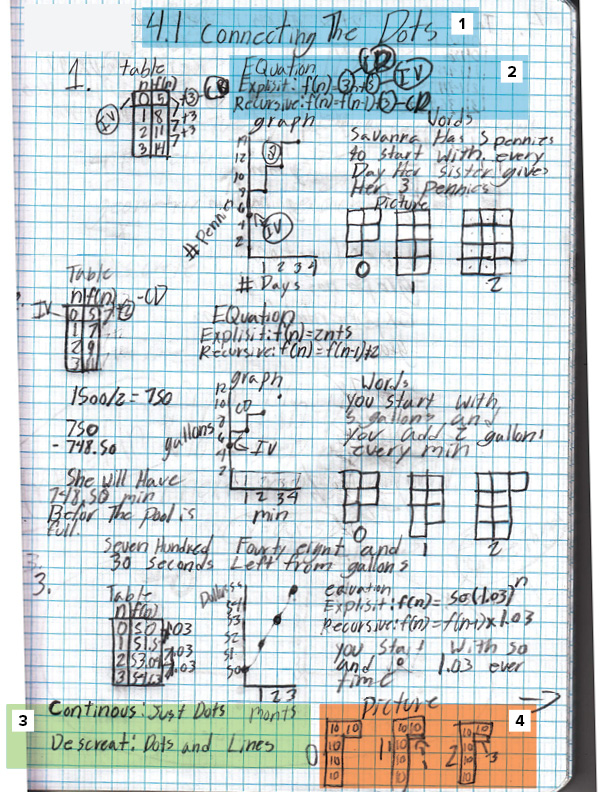All students should graduate from high school ready for college, careers, and citizenship.


NOTE:
This sample of student work was selected from a special education classroom.
1. CCSS Alignment
The student clearly can distinguish between situations that can be modeled by a linear function versus an exponential function. All tables show equal differences over equal intervals for linear situations and equal factors over equal intervals for exponential situations.
Standard referenced:
HSF-LE.A.1: Distinguish between situations that can be modeled with linear functions and with exponential functions.
2. CCSS Alignment
The student has clearly labeled the constant rate of change in the linear functions and the growth factor in the exponential functions. The student has identified the initial value and constant rate of change or constant growth factor in multiple representations. The student demonstrates an understanding of equal differences over equal intervals by their work for calculating how long it will take for the pool to fill in question 2. The student has also figured out that you can subtract 3% by multiplying by .97 in question 4.
Standard referenced:
HSF-LE.A.2: Construct linear and exponential functions, including arithmetic and geometric sequences, given a graph, a description of a relationship, or two input-output pairs (include reading these from a table).
3. Understanding
The student confuses the words discrete versus continuous, as shown by the explanation “continuous—just dots, discrete—dots and lines.”
4. Comprehension & Application
SMP.7: Look for and make use of structure.
The student is using multiple representations and is connecting the parameters for initial value and rate of growth in each situation across multiple representations. For example, the structure of the picture in question 3 clearly shows an understanding of exponential growth by the increasing area of the rectangle that gets added each minute.
